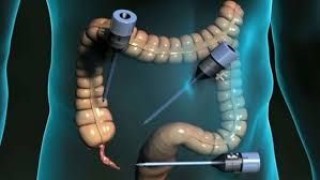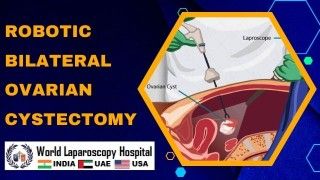Laparoscopic Appendectomy by Bipolar
Add to
Share
261 views
Report
2 months ago
Description
Laparoscopic appendectomy has become the gold standard for managing acute and complicated appendicitis, offering patients minimal postoperative pain, faster recovery, and reduced hospital stay. Among the advanced techniques employed, the use of bipolar electrosurgery for laparoscopic appendectomy has shown significant advantages in precision, safety, and efficiency. What is Laparoscopic Appendectomy by Bipolar? Laparoscopic appendectomy by bipolar is a minimally invasive surgical procedure to remove the appendix using a laparoscope and bipolar electrosurgical instruments. Unlike traditional monopolar cautery, bipolar energy passes between two electrodes at the tip of the instrument, providing controlled tissue coagulation without spreading current to surrounding tissues. This reduces the risk of unintended burns and injury to nearby structures, which is particularly important in inflamed or complicated cases. Indications This procedure is indicated in: Acute appendicitis Complicated appendicitis with localized abscess Recurrent appendicitis Appendiceal tumors (rare) Surgical Technique Patient Positioning and Anesthesia: The patient is placed in the supine position under general anesthesia. Port Placement: Typically, a three-port technique is used – one umbilical port for the camera and two working ports in the lower abdomen. Exploration: The abdominal cavity is inspected to identify the appendix, its base, and any associated pathology. Bipolar Dissection: Using a bipolar forceps, the mesoappendix is carefully coagulated and divided. Bipolar energy allows precise control over hemostasis, minimizing blood loss. Appendix Ligation: The appendix is ligated at its base, usually with an endoloop or stapler, and then removed through the umbilical port. Closure: Ports are removed, and the small incisions are closed cosmetically. Advantages of Bipolar Technique Enhanced Safety: Reduced thermal spread minimizes risk of injury to bowel and surrounding structures. Precise Hemostasis: Bipolar coagulation ensures better control of bleeding, especially in a highly vascular mesoappendix. Reduced Operative Time: Efficient tissue sealing can shorten surgery duration. Lower Complication Rate: Fewer post-operative infections and lower incidence of stump leakage compared to conventional techniques. Faster Recovery: Patients experience less pain, earlier ambulation, and quicker return to daily activities. Postoperative Care Early oral intake is encouraged within hours of surgery. Pain is managed with mild analgesics. Patients are usually discharged within 24–48 hours in uncomplicated cases. Follow-up is done to monitor wound healing and detect any complications early. Conclusion Laparoscopic appendectomy using bipolar energy represents a safe, efficient, and advanced approach for appendectomy. By combining the advantages of minimally invasive surgery with the precision of bipolar coagulation, surgeons can perform appendectomies with minimal complications and enhanced patient outcomes. As technology evolves, this technique is likely to become the preferred standard for appendiceal surgery worldwide.
Similar Videos






